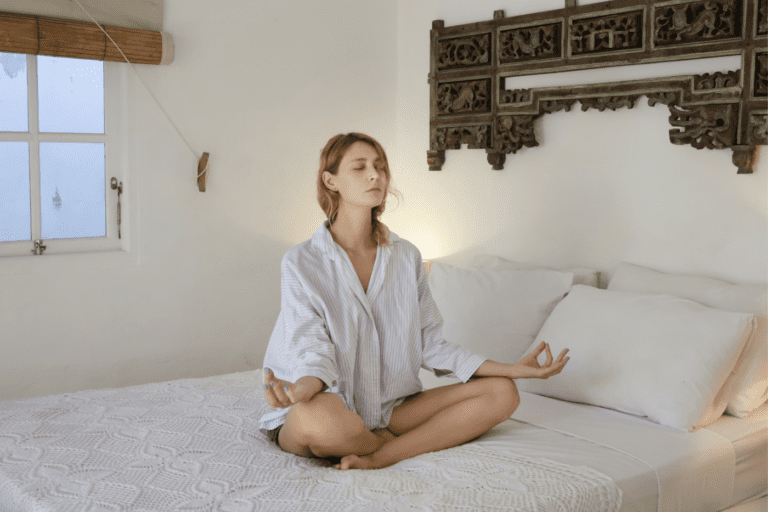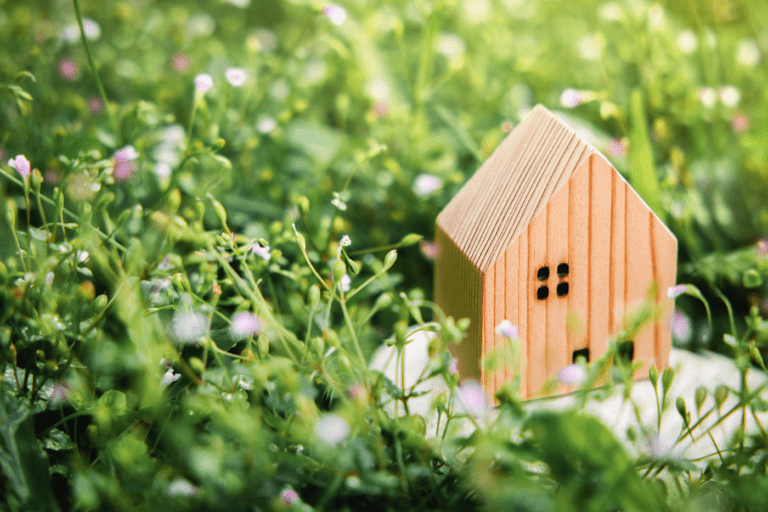Do you ever feel like life is moving way too fast?
Especially for students drowning in deadlines and busy professionals juggling endless tasks, the struggle is real.
The constant rush can leave you drained, stressed, and disconnected. But what if there were 27 game-changing slow-living tips designed specifically for you? The good news is, we have those exact tips ready for you! So, let’s get started.

What Exactly Is Slow Living?
So, what exactly is slow living?
It’s a philosophy that challenges the fast-paced, hectic nature of modern life, emphasizing a more intentional and mindful approach to daily living.
Slow living encourages you to savor each moment, prioritize meaningful connections, and align your actions with your values.
It’s not about doing everything at a snail’s pace (duh!) but rather about finding a balance that allows you to appreciate life fully.
The 5 Pillars of Slow Living
- Mindful Presence: Slow living starts with being fully present in each moment. Practice mindfulness to appreciate the sights, sounds, and sensations around you.
- Intentional Living: Identify your values and priorities. Slow living encourages purposeful decision-making aligned with what truly matters to you.
- Sustainable Practices: Embrace a more sustainable lifestyle. Whether it’s through conscious consumption, reducing waste, or choosing eco-friendly options, slow living cares for the planet.
- Quality over Quantity: In a world of excess, slow living emphasizes quality over quantity. Invest your time, energy, and resources in things that truly add value to your life.
- Balanced Pace: Slow living isn’t about being slow for the sake of it. Find a pace that allows you to enjoy life without sacrificing productivity or success.
Remember, incorporating these principles doesn’t mean a complete overhaul. Small, intentional changes can lead to a more fulfilling and balanced life.
How Do I Start Living a Slower Life?
In a world that often feels like it’s spinning too fast, embracing a slower life might seem like a daunting task.
The good news is that the journey to slow living is about small, intentional steps rather than drastic changes.
Let’s break it down, starting with a set of universal slow living tips for everyday life, followed by tailored advice for both busy individuals and students:

8 Slow Living Tips for Everyday Life
1. Morning Rituals
Begin your day mindfully. Whether it’s savoring a cup of tea, journaling, or a short meditation, set the tone for a deliberate and calm morning.
How To
Start your day with a mindful morning ritual; dedicate just 10 minutes to it. Gradually extend this to 15 or 20 minutes for an even more enriching experience.
It could be enjoying a cup of tea, practicing deep breathing, or jotting down a few thoughts in a journal. Gradually extend this time as it becomes a cherished part of your routine.
2. Tech-Free Time
Designate specific periods in your day to disconnect from screens. This fosters genuine connections and helps reduce the constant stream of information.
How To
Choose a specific hour each day to detach from your devices. Use this time to connect with loved ones, engage in a hobby, or simply be present in the moment. Start with short intervals and gradually extend as you feel more comfortable.
Begin with just 30 minutes if an hour feels daunting.
3. Nature Breaks
Incorporate short breaks outdoors. A brief walk or moments in nature can refresh your mind and provide a welcome break from the hustle.
How To
Incorporate brief nature breaks into your day. It could be a stroll in a nearby park, a moment on your balcony, or even a glance at the sky. Aim for just 5 minutes initially and increase the duration as you feel the positive impact.
4. Walking Meditation
Very much like an outdoor break but fused with mindfulness practices. Walking meditation helps you center your thoughts, connect with your surroundings, and appreciate the act of moving.
How To
- Set Clear Intentions:
- Start your walk by defining clear intentions, visualizing your goals, and cultivating the energy you desire.
- Breath and Movement Harmony:
- Sync your breath with your steps, inhaling positivity and exhaling tension. Experience the rhythmic connection between your breath and movement.
- Affirmations:
- Utter empowering affirmations with each step, such as “I am strong,” “I am loved,” and “I am beautiful,” resonating with your dreams.
- Present-Moment Immersion:
- Immerse yourself in the present moment. Feel the ground beneath, listen to the world around you, and absorb the vibrant colors of your surroundings.
- Gratitude Infusion:
- Infuse gratitude into your walk, expressing thanks with every step. Acknowledge the journey, embrace opportunities, and anticipate the unfolding manifestations.
5. Mealtime Mindfulness
Practice mindful eating by savoring each bite. Turn off distractions and fully engage with the flavors and textures of your food.
How To
Begin by turning off electronic devices during meals. Focus on the flavors, textures, and aromas of your food. Start with 1 meal per day, and gradually extend this practice to others.
6. Declutter Spaces
Simplify your surroundings. Decluttering can create a more serene environment, reducing mental noise and promoting a sense of calm.
How To
Select 1 small area in your home to declutter each week. It could be a drawer, a shelf, or a workspace. Tackling small spaces prevents overwhelm, and the cumulative effect over time is transformative.
7. Single-Tasking
Break free from the habit of multitasking. Focus on one task at a time to enhance efficiency and reduce stress.
How To
Choose 1 task to single-task each day. Whether it’s replying to emails, working on a project, or even washing dishes, focus entirely on that task. Gradually expand this practice to other activities.
single tasking
Single-tasking is the practice of focusing on and completing one task at a time without splitting attention between multiple activities. It stands in contrast to multitasking, where individuals attempt to perform several tasks simultaneously.
8. Reflective Evening
Wind down your day with reflection. Whether through journaling or quiet contemplation, take stock of your experiences and express gratitude.
How To
Dedicate a few minutes before bedtime to reflect on your day. Consider what went well and express gratitude. Start with a brief reflection and increase the time as you integrate this into your nightly routine.
5 Slow Living Tips for Busy People

1. Prioritize Tasks
Identify and focus on high-priority tasks. This prevents feeling overwhelmed and allows for a more purposeful use of your time.
How To
Begin your workday by identifying the top three priorities. Focus on these tasks before addressing less critical matters. Gradually refine your prioritization process as you become more attuned to your workflow.
2. Work-Life Boundaries
Set clear boundaries for work-related communications outside of office hours. Respect your personal time to avoid burnout.
How To
Set designated “tech-free” periods after work hours. Clearly define boundaries between work and personal life. Establish your work hours and avoid responding to work-related messages outside those hours!
3. Scheduled Breaks
Intentionally schedule short breaks during busy periods. Even a few minutes of stretching or deep breathing can rejuvenate your mind.
How To
Schedule short breaks during peak work periods. Set a timer for five minutes to stretch, breathe, or take a brisk walk. Gradually increase break durations as your schedule allows.
4. Delegate Non-Essential Tasks
Recognize when it’s appropriate to delegate tasks. Sharing the workload promotes a balanced and more manageable lifestyle.
How To
Identify tasks that can be delegated or postponed. Prioritize your mental well-being by reducing unnecessary workload. Delegate tasks that don’t require your immediate attention.
5. Prioritize Sleep
Your sleep should be sacred to you. Because only a rested YOU can live life mindfully and intentionally!
How To
Make quality sleep a priority. Establish a calming bedtime routine, limit screen time before bed, and ensure your sleep environment is conducive to restful sleep.
5 Slow Living Tips for Students

1. Mindful Study Sessions
Organize your study sessions with time blocks. This helps prevent burnout and allows for more effective learning.
How To
Practice mindfulness during study sessions. Take short breaks to focus on your breath and reset your mind. Incorporate techniques like the Pomodoro Technique for structured work intervals followed by brief breaks.
2. Mindful Study Breaks
Incorporate short breaks between study sessions. Use this time to stretch, hydrate, or practice a brief mindfulness exercise.
How To
Integrate 5-minute breaks between study sessions. Stretch, take a short walk, or practice deep breathing. Gradually extend these breaks based on your study schedule.
3. Balanced Social Life
Maintain a balance between academic and social commitments. Building connections is vital for overall well-being.
How To
Allocate specific time slots for socializing within your weekly schedule. This ensures you maintain a balance between academic and social commitments. Adjust the time slots as needed.
Alone Time
Even if you don’t feel like socializing with others, schedule a date with yourself in your favorite cafe. Enjoy the ambiance, indulge in your favorite drink, and savor the moment of being in a bustling yet comforting setting.
On days when you prefer a quieter setting, plan a cozy “home date” with yourself. Create a calming atmosphere, indulge in your favorite book or movie, and perhaps try out a new recipe.
4. Goal Setting
Set realistic academic goals that will not stress you out! Break them down into manageable steps to avoid feeling overwhelmed.
How To
Set one academic goal for the semester, breaking it down into manageable steps. Begin with achievable milestones and adjust your goals as you gain confidence in your progress.
5. Self-Care Routine
Establish a self-care routine that aligns with your schedule. Small acts, like a quick workout or a moment of reflection, can make a significant difference.
How To
Develop a simple self-care routine by incorporating one activity per day. It could be a short workout, a 5 minute skin care routine, a moment of reflection, or a healthy snack. Gradually expand your routine based on your comfort and schedule.
5 Slow Living Hobbies

- Gardening:
- Why: Cultivating a garden promotes a sense of connection with nature and allows you to witness the slow, beautiful process of growth.
- How To Start: Begin with a small indoor plant or a few potted herbs. Gradually expand to an outdoor garden if space permits.
- Photography:
- Why: Capturing moments through photography encourages you to be present and observant. It’s a mindful way to appreciate the beauty in ordinary things.
- How To Start: Use your smartphone or a basic camera to begin. Explore your surroundings, focusing on the details that often go unnoticed.
- Reading:
- Why: Reading is a timeless and immersive hobby that allows you to slow down, escape, and gain new perspectives through literature.
- How To Start: Choose a book in a genre you enjoy. Set aside dedicated time for reading, even if it’s just a few pages each day.
- Handcrafts (Knitting, Crocheting, etc.):
- Why: Engaging in handcrafts promotes relaxation and mindfulness. The slow, rhythmic movements can be meditative and produce tangible, rewarding results.
- How To Start: Pick up basic knitting or crocheting supplies and follow beginner tutorials (like these easy knitting projects for beginners). Start with simple projects and progress at your own pace.
- Cooking and Baking:
- Why: Cooking or baking from scratch allows you to savor the process and enjoy the fruits of your labor. It’s a delicious way to slow down and appreciate the art of creating a meal.
- How To Start: Begin with straightforward recipes that align with your culinary interests. Experiment with new ingredients and techniques as you become more comfortable.
Incorporating Slow Living Tips: A Gradual Approach
Feeling overwhelmed? Take a gradual approach to incorporate slow living tips into your routine. Start by introducing one new habit per month.
This allows you to embrace change at a comfortable pace, making the journey towards a slower life both sustainable and rewarding.
Remember, it’s about progress, not perfection.
Is it OK to Want to Live a Slow Life?
Absolutely. In a world that celebrates hustle, desiring a slower pace might raise a few eyebrows. But, here’s the thing: it’s not just okay—it’s commendable.
Here’s why your choice is valuable:
Benefits of a Slow Life
- Mindful Living: It’s about savoring moments, finding joy in simplicity, and relishing the beauty in the ordinary.
- Quality over Quantity: Embrace depth over speed. It’s about the richness of experiences, not the quantity.
- Health and Well-being: Prioritize self-care. A slower life reduces stress, promoting a healthier, balanced lifestyle.
- Deeper Connections: Slow living allows for meaningful connections, not just fleeting interactions.
Facing Societal Pressures
- Resilient Choices: Living slowly is an act of resilience. It’s about staying true to yourself, not conforming to external pressures.
- Changing Narratives: Your choice challenges the idea that busyness equals success, encouraging others to rethink their priorities.
Personal Encouragement
- Your Unique Journey: Your path is yours alone. Choosing a slower life is a commitment to authenticity and personal fulfillment.
- Embrace the Moments: Celebrate tranquility, the richness of experiences, and the joy found in the simplicity of a life well-lived.
In a culture that often values speed over substance, wanting a slow life isn’t just okay—it’s your intentional step towards a more fulfilling and meaningful journey. Keep embracing the moments that truly matter to you.
Conclusion
In the midst of the hustle, these 27 Slow Living Tips offer a breath of tranquility. Whether you’re a student or navigating a busy schedule, the magic is in the small, intentional steps.
Now, a gentle nudge: identify the stress points—notifications, multitasking, the perpetual rush. Choose one or two tips to integrate. These small changes can be your sanctuary.
Embrace slow living—where moments matter, connections deepen, and life aligns with your pace. Your journey starts now. What will you slow down and savor today? The choice is yours.








